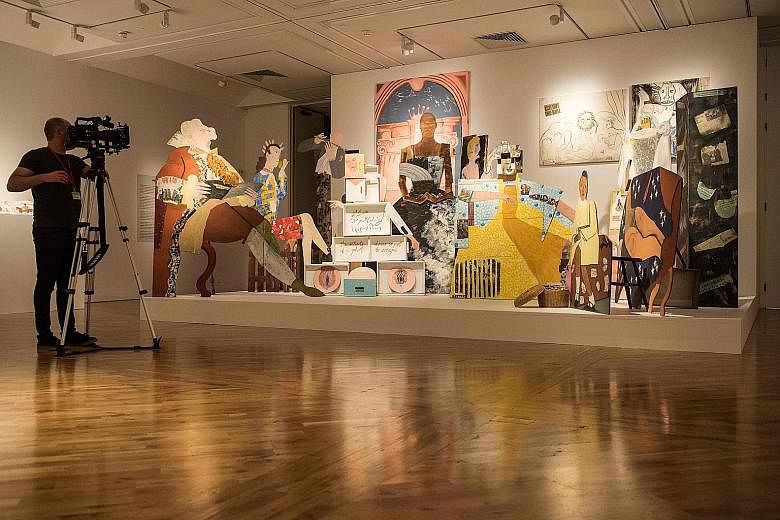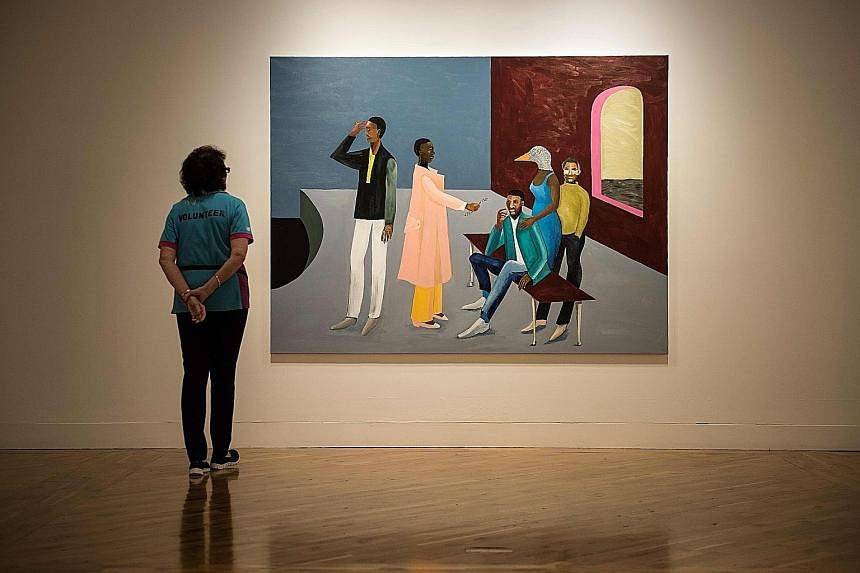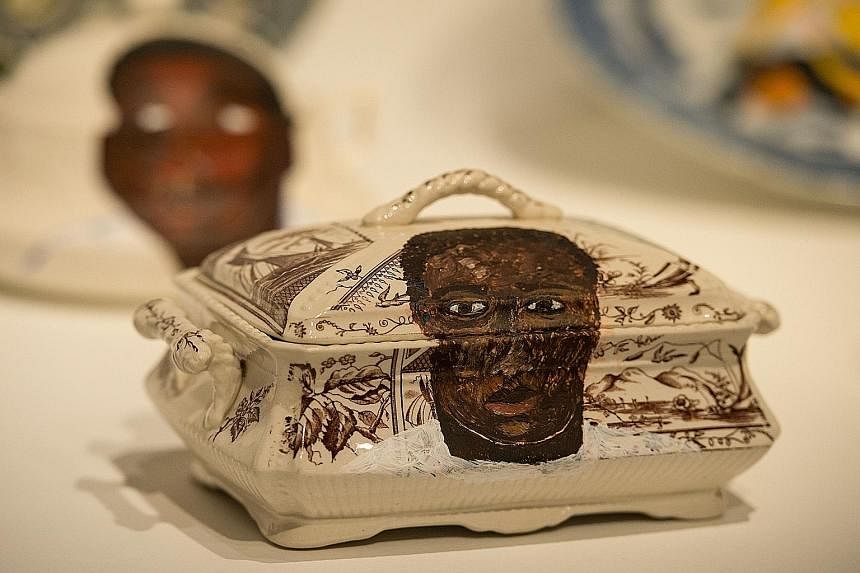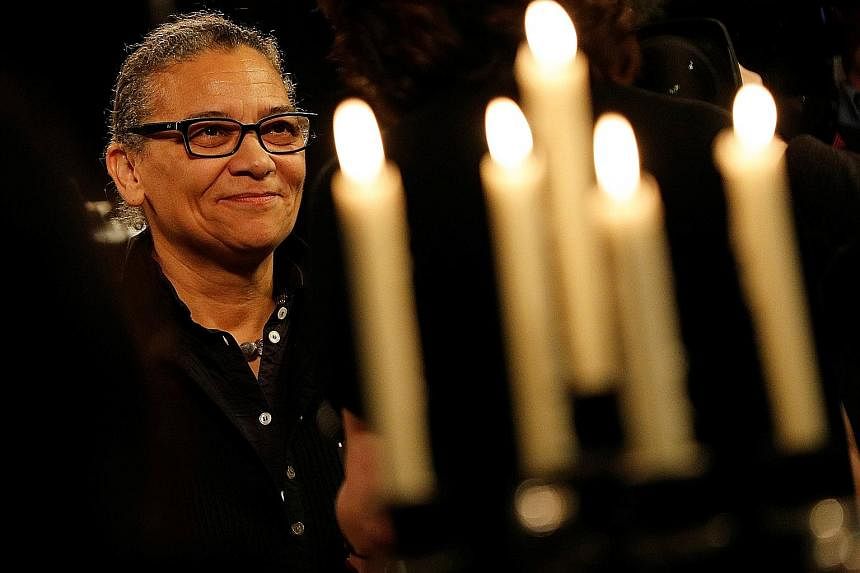LONDON • Visual artist Lubaina Himid, best known for her paintings, installations and drawings depicting the African diaspora, won the Turner Prize on Tuesday night, making her the first non-white woman to be given the leading British contemporary art award.
Her victory brings a cash prize of £25,000 (S$45,240) and was announced by British electronic musician Goldie at a ceremony in Hull, England, broadcast by the BBC.
Mr Alex Farquharson, Tate Britain's director and chairman of the Turner Prize jury, said in a statement that the jury "praised the artist for her uncompromising tackling of issues including colonial history and how racism persists today".
Himid won for three of her shows this year, in Oxford, Bristol and Nottingham, he said.
Among the selection of her work on display at the Turner Prize exhibition in Hull was a collection of English ceramics painted with images of black slaves.
Himid, 63, is the oldest recipient in the prize's history; a rule change made her eligible. This year's award was the first since 1991 that was open to artists over 50.
In addition to Himid, nominee Hurvin Anderson, 52, was also made eligible by the new age limit.
The relaxed entry requirements were welcomed by critics, who said they widened the scope of artists and better reflected modern British art.
Anderson explores themes of identity in his paintings of Afro-Caribbean barbershops.
The other nominees this year were Rosalind Nashashibi, a film-maker known for blending documentary techniques with scripted scenes, and Andrea Buttner, whose prize show entry included a display about French philosopher and activist Simone Weil.
Works by all nominees are on display in an exhibition at the Ferens Art Gallery in Hull.
In previous years, the prize was judged only on the recent exhibitions for which the artists were nominated. This was the first year in which the prize show itself was formally taken into account.
This year's shortlist was also noted for being one of the most diverse. All the nominees have connections abroad, either by birth or through parentage.
Nashashibi, 44, was born in London to a Palestinian father and an Irish mother; Buttner, 46, is Germany-born; Anderson is the son of Jamaican immigrants; and Himid was born in Tanzania.
The Turner Prize was established in 1984 and is awarded to an artist born, living or working in Britain.
Last year's winner was multimedia artist Helen Marten, who won for her installations made of mixed materials including wood, glass, aluminium and feathers.
Previous winners have included Grayson Perry, Steve McQueen and Damien Hirst.
The exhibition at the Ferens Gallery runs until Jan 7.
NYTIMES




